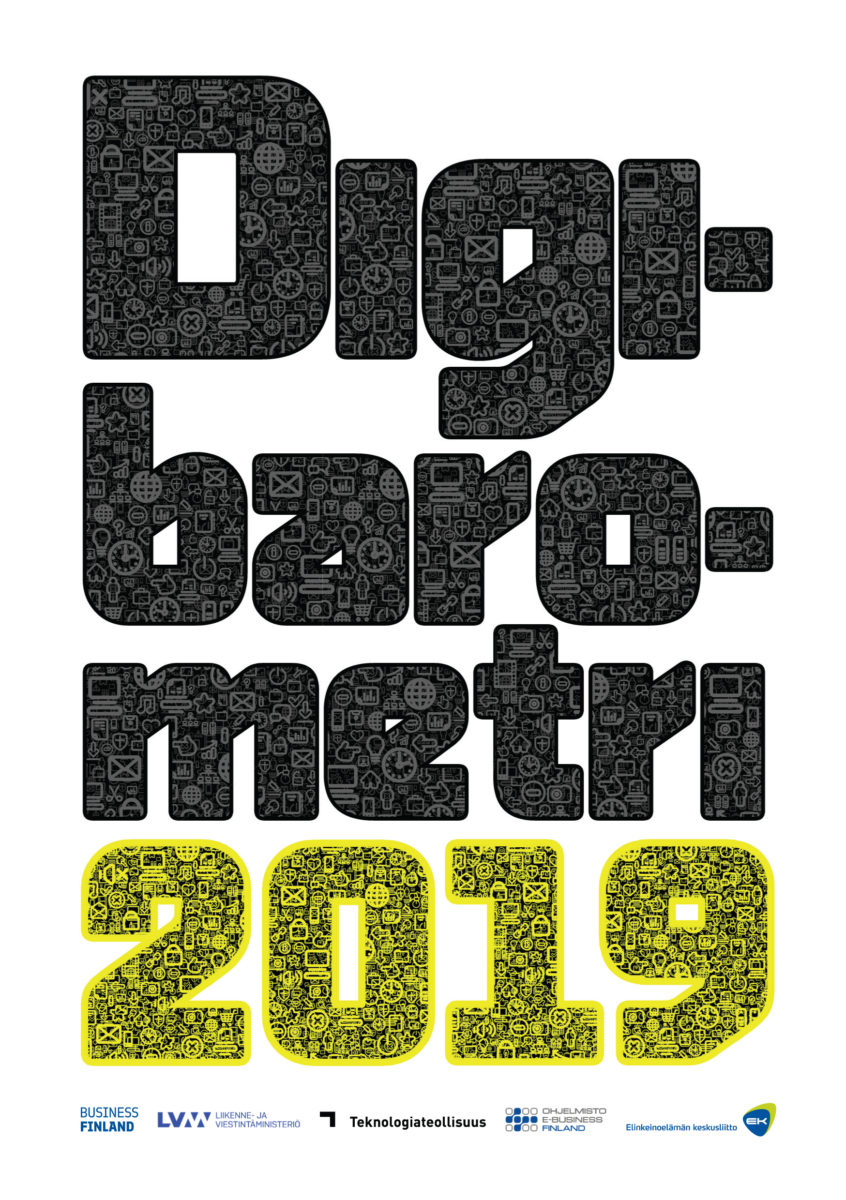
Vuosina 2014–2018 julkaistut digibarometrit ovat kertoneet kansakunnan digitaalisen asennon sekä siinä tapahtuneet muutokset, myös suhteessa muihin maihin. Näin on jälleen tänäkin vuonna. Jo toista kertaa muu osuus Digibarometri 2019 -julkaisusta rakentuu kahden pääteeman – resurssien riittävyyden sekä massadatan laajemman hyödyntämisen – ympärille.
Aiempien digibarometrien perusteella tiedämme, että heräämisensä jälkeen Suomi kiri itsensä vertailun kärkisijoille. Vuoden 2019 tuloksista on kuitenkin havaittavissa, että digitalisaation vaikutukset Suomen talouskasvuun ovat jäämässä verrokkimaista jälkeen.
Datan määrän, vaihdannan ja analytiikan odotetaan kasvavan huimasti tulevien vuosien aikana. Niiden myötä lisääntyy merkittävästi myös IT-resurssien sekä energiankysyntä. Tästä näkökulmasta onkin syytä kysyä, miksi näin on. Voidaanko datan hyödyntämiseen tarvittavien resurssien kasvun nähdä paremmin syntyvän esimerkiksi tieteellisten julkaisumäärien kasvusta? Vai liittyykö kehitys ennemminkin teollisuuden sensoridataan tai kuluttajamarkkinoiden kaupallisiin tarkoitusperiin? Onko kyse sittenkin vain videoiden suoratoiston ja online-pelaamisen lisääntymisestä? Entä miten liikenteen tekoälyinnovaatiot ja kyberturvallisuus vaikuttavat resurssitarpeeseen?
Ymmärtämällä datan kasvun alkuperää ja syitä meidän on helpompi tehdä oikeanlaisia resursointipäätöksiä niin yrityksissä kuin politiikassakin.
Timo Seppälän esityskalvot julkistustilaisuudesta Musiikkitalolla 11.6.2019.
Finland ranks third in Digibarometer 2019, which compares 22 countries with a composite index consisting of 36 variables. The ranking was the same in the last year. The United States rises from its last year’s second place to the first place. Denmark leaps from the sixth position to second place. Norway goes down from the first place to fifth place. Sweden takes the sixth position (one step down from 2018). The bottom of the list is once again occupied by Brazil, Italy and Russia.
Digibarometer is a study which evaluates how well individual countries utilize digitalization and how they compare to one another in this respect. It measures the utilization of digital capabilities. In other words, general factors such as educational levels or a country’s role as a producer of ICT, for example, do not affect the scoring. The measurement is done on three levels (capabilities, utilization, and implications) and across three sectors (company, civic, and public). Each sector is examined on each level, thus forming a scoring matrix of nine cells for each country.
Finland has been among the three best countries in the Digibarometer during the six year it has been carried out. It held the lead in 2016 and has been in the third place in the last two scoreboards. Finland’s high placement is explained by its even performance across various indicators. Finland’s capabilities to utilize digitalization are the second best in the world. In the actual utilization (5th) and implications (6th), however, Finland scores lower. Earlier on, the company sector has been Finland’s leading digital sector. Now this position of the Finnish companies is slightly waning in the international comparison (4th this year). Simultaneously, the public sector (2nd) maintains its good position, thus assuming the role of the new cornerstone of Finland’s placement. In the civic sector, Finland improves its ranking by two steps compared to the last year and is now in the third place.
Arkadiankatu 23 B
00100 HELSINKI
Vaihde ja vastaanotto avoinna arkisin klo 8.30–15:30.
+358 (09) 609 900